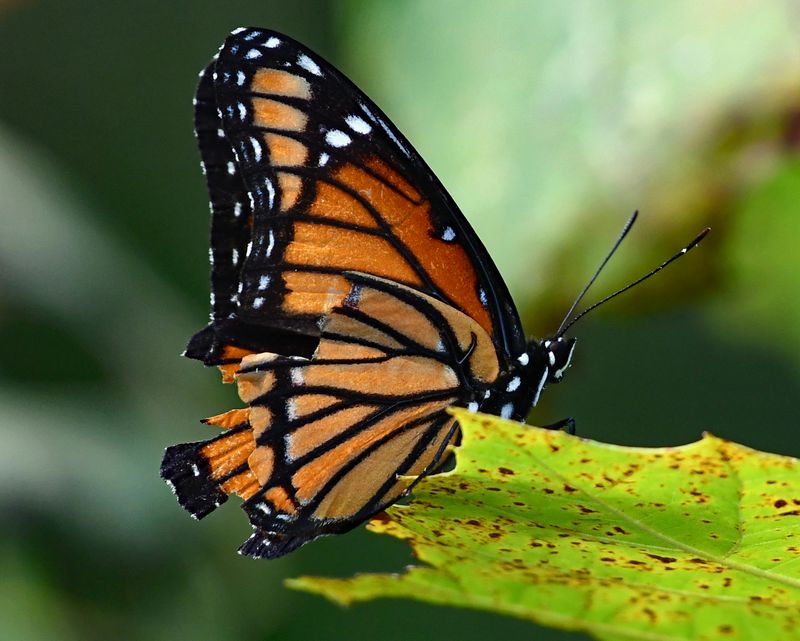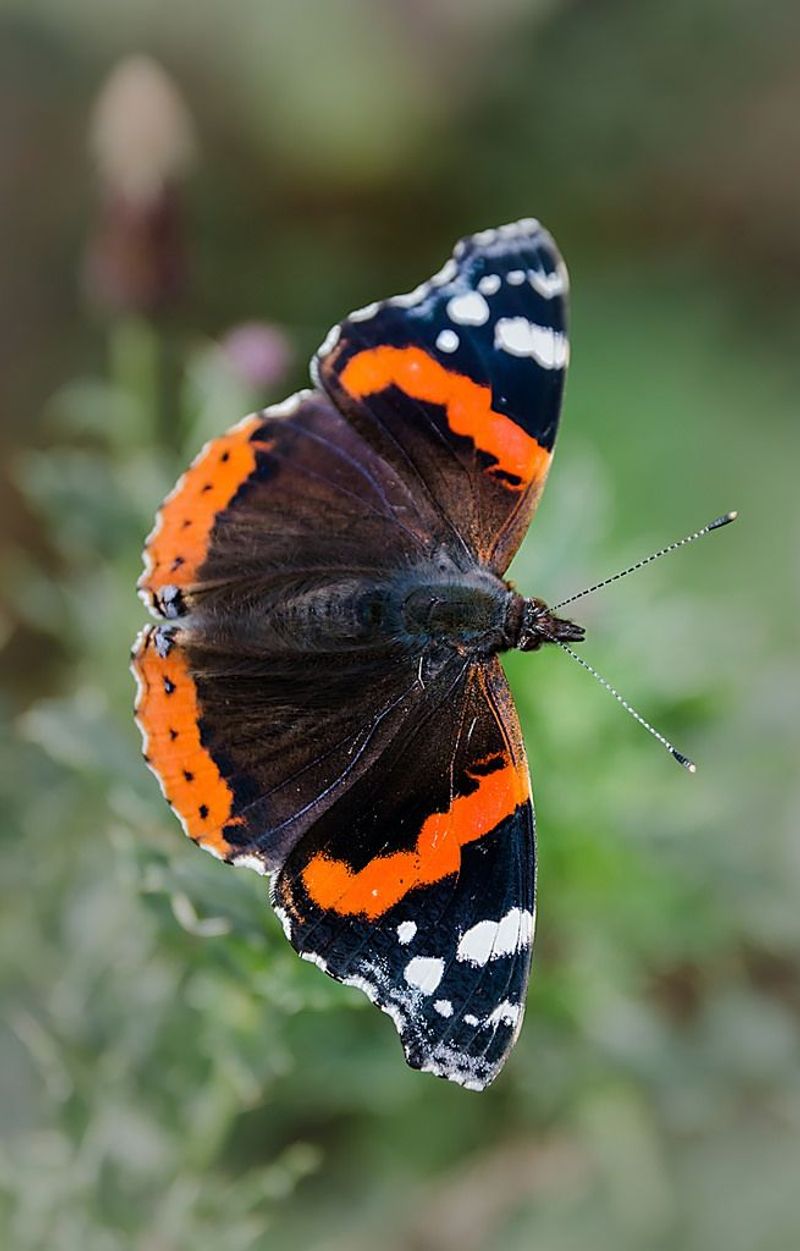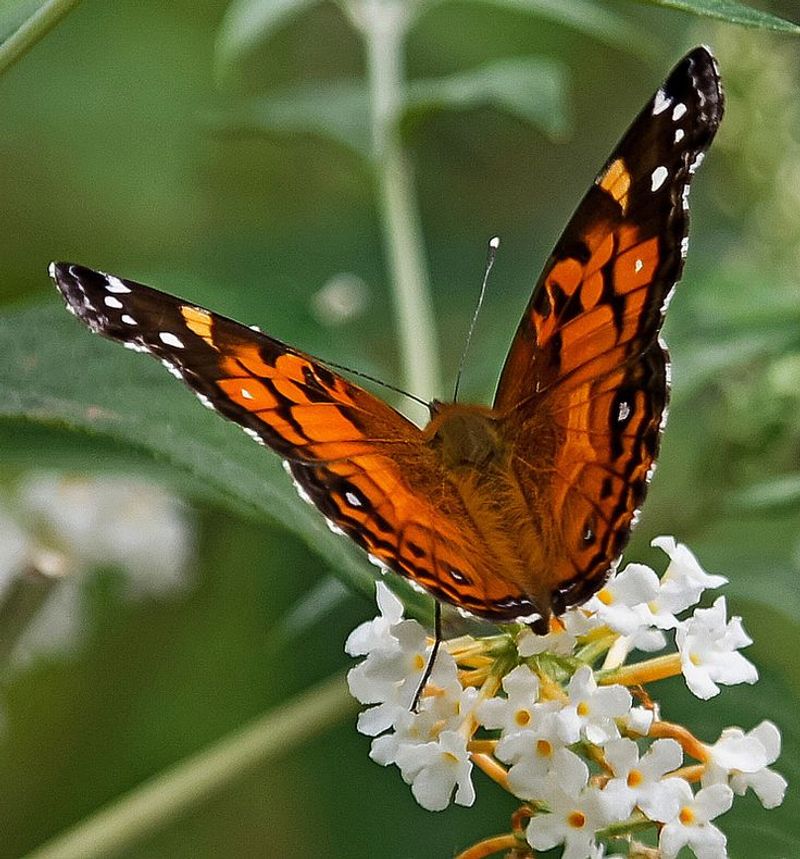Monarch butterflies are hard to miss with their bold orange wings and striking black patterns—but they’re not the only ones sporting that iconic look. A few other butterflies have evolved with similar coloring, either for protection or by coincidence, and it’s surprisingly easy to mix them up at first glance.
If you’ve ever pointed out a Monarch only to second-guess yourself, you’re not alone. Some of these lookalikes share nearly identical markings, while others just have enough in common to cause a double take. Knowing what sets them apart can make spotting them a bit more fun—and a lot more accurate.
Viceroy Butterfly

With its striking orange wings and black veins, the Viceroy often fools even seasoned butterfly watchers. Unlike the monarch, the Viceroy sports a defining black line across its hindwings. This subtle difference is crucial for accurate identification.
While both butterflies mimic each other as a form of survival, the Viceroy tends to be slightly smaller. Observing their flight patterns can also help; Viceroys have a more erratic flight compared to the graceful glide of monarchs. Spotting these nuances can enhance your butterfly-watching experience.
Red Admiral Butterfly

The Red Admiral is a striking butterfly with bold red-orange bands on its dark wings, making it a potential monarch lookalike. While its pattern is more defined, the bright colors are reminiscent of the monarch’s.
This butterfly can be found basking in the sun during spring and summer months, showcasing its vibrant hues. Known for its strong, fast flight, the Red Admiral is a common sight in gardens and parks.
Interestingly, it has a remarkable migratory pattern, traveling vast distances despite its delicate appearance.
Spicebush Swallowtail

The Spicebush Swallowtail’s enchanting black wings, adorned with iridescent blue spots, can sometimes echo the monarch’s allure. Unlike the monarch, it features a distinct tail-like extension on its hindwings.
This butterfly is often spotted in shaded woodlands, fluttering gracefully among spicebush shrubs. The vibrant orange spots on its underwings can be surprisingly reminiscent of the monarch’s iconic look.
Notably, the caterpillar of this species mimics a snake’s appearance to deter predators, a fascinating trait among butterflies.
American Lady Butterfly

The American Lady is a delicate butterfly featuring orange and black patterns that might remind you of a monarch. Its wings are adorned with striking white eye spots that add to its charm.
Found flitting about open fields and gardens, the American Lady is a frequent visitor to wildflowers, adding a splash of color to the scenery. Its upper wing surface, when closed, reveals intricate designs often mistaken for the monarch’s.
Did you know? This species undergoes seasonal migrations, traveling southward in the fall.
Queen Butterfly

Sporting earthy brown wings with white spots, the Queen butterfly is another doppelgänger of the monarch. Though similar in color, its wings are devoid of the monarch’s iconic black veining.
Queens are known for their preference for arid environments, often fluttering around deserts and open fields. Their unique wing texture, appearing more opaque than the monarch’s, can be a distinguishing feature. Paying attention to these details helps in recognizing the Queen amidst a flurry of monarch look-alikes.
Soldier Butterfly

The Soldier butterfly is a close relative of the Queen, often sharing similar habitats. Its rich brown wings, peppered with faint white spots, could easily confuse an observer.
Soldiers differ in their slightly narrower wing shape and the delicate black lines crisscrossing beneath their wings. They thrive in tropical environments, often seen basking in the sun. Noting their preferred locations can aid in distinguishing them from the more widespread monarch.
Painted Lady

Known for their global presence, Painted Ladies can resemble monarchs in a fleeting glance. Their wings exhibit a patchwork of orange and black, interspersed with white spots, creating a mesmerizing effect.
These butterflies lack the monarch’s size and pronounced black veining, often appearing during seasonal migrations. Watching their ephemeral presence in gardens and fields can be a delightful experience for butterfly enthusiasts. Recognizing their distinct patterns helps avoid confusion with monarchs.
Gulf Fritillary

Gulf Fritillaries are renowned for their vivid orange wings, adorned with bold black markings. At a glance, they might be mistaken for a monarch, but their elongated wing shape sets them apart.
These butterflies prefer warmer climates, often seen fluttering energetically in gardens and fields. Observing their unique flight style, often more rapid and erratic than the monarch’s, serves as a key identifier. Appreciating these differences enriches the butterfly-watching experience, highlighting the diversity in nature.

